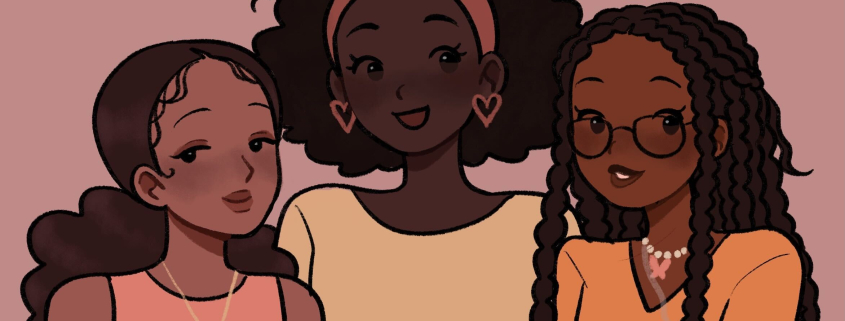Stop removing Black women from the conversation

With Black History Month officially concluded, Women’s History Month is currently in full swing. As a Black woman, one may think that this time of year must be exceptionally empowering and enriching for me: two consecutive months centered around the histories of my identities.
However, it feels as though for each respective month I am forced to shed one experience in order to give proper “attention” to others. But rather than being heard, it feels like I’m too woman to be Black, too Black to be a woman.
Pinpointing this specific experience has been in the works since the ‘70s with Black critical race theorists and feminists like Audre Lorde, Kimberlé Crenshaw and bell hooks. Thinkers were beginning to realize that the ascension of feminist dialogues and gender studies tended to only detail the experience of one demographic of women: upper-class white women.
When conversations around womanness became increasingly academic, it became inaccessible to lower-class women of color. Furthermore, because of this and the discussion being centered around power in terms of a generic “women are not equal to men” framework, feminism quickly became — and at times still appears to be — a conversation reserved for the women with the most resources.
Yes, privilege exists in oppressed groups. Sounds paradoxical, doesn’t it?
Responsively, dialogues about women subordination became simplified, general and diluted with the intention of being able to include all women — think about surface-level white feminist initiatives like “free the nipple,” yoga obsessions and body hair positivity dominating women’s issues. But it does quite the opposite.
Instead, we get an essentialized definition of what it means to be a woman, which further marginalizes the experiences of women who have more pressing issues than how men react to their armpit hair. Those who do not and cannot fit into the outlined “feminist” standards because of other identifiers like race, class and sexuality are often ignored.
My identity, however, is cumulative. It cannot be isolated. I am a Black woman; I cannot shed my womanness in the same sense that I cannot shed my Blackness. As Crenshaw coined, it is an example of intersectionality. Consequently, the way in which I navigate the world and the way the world navigates around me, is a result of both simultaneously.
This, then, is precisely how misogynoir works: the subordinations and prejudices against Black women specifically. The term itself is still fresh, coined in 2010 by scholar and activist Moya Bailey, but its definition has been manifesting for centuries.
One of the main outlines of misogynoir is that Black women tend to have a limited, set amount of containers they are expected to fit into, many of which have origins from slavery in the 18th and 19th centuries.
Some of the most recognizable stereotyped containers include the mammy figure: a matronly, submissive Black woman often depicted with a low education whose sole purpose is to be a caretaker like Hattie McDaniels’ role as Mammy from “Gone with the Wind.”
Then there’s the Jezebel: a typically light skinned, promiscuous and sexual Black woman, often the mistress. Both Halle Berry and Dorothy Dandridge are notorious for taking these roles. Another popular, more modern typecast is the sassy, loud, often dark-skinned role, more often than not a side character. Think Dijonay from “The Proud Family,” or Brenda Meeks in the “Scary Movie” franchise.
Growing up and seeing these as the sole depictions of Black women in the media I consumed was disheartening in a way that I could not yet articulate. It was not just sexism, nor racism with the stereotyping and typecasting — it was a combination of both to caricaturize Black women.
Senior contributor of Forbes, Janice Gassam Asare details how the effects of misogynoir cause Black women to be ignored and further marginalized.
“Black women and girls who share experiences of abuse, trauma, and assault are largely shunned, criticized and ignored,” Asare writes. “If those in positions of power and privilege are not shielded from misogynoir (read: Megan Thee Stallion), then what protections do Black women who are not in positions of power and privilege actually have?”
Though I can acknowledge that we are moving in the right direction with more accurate diversity in the media. More texts from Black women are being published, respected and overall being given more mindfulness when it comes to these issues. However, in general, we still have a long way to go before Black women are acknowledged, accepted and integrated holistically.
It starts with listening.
While I find myself often educating and detailing my experiences through my creative projects, it is not the job nor sole responsibility of the Black community to do so. Us existing is enough. Us speaking is enough. Listen.

